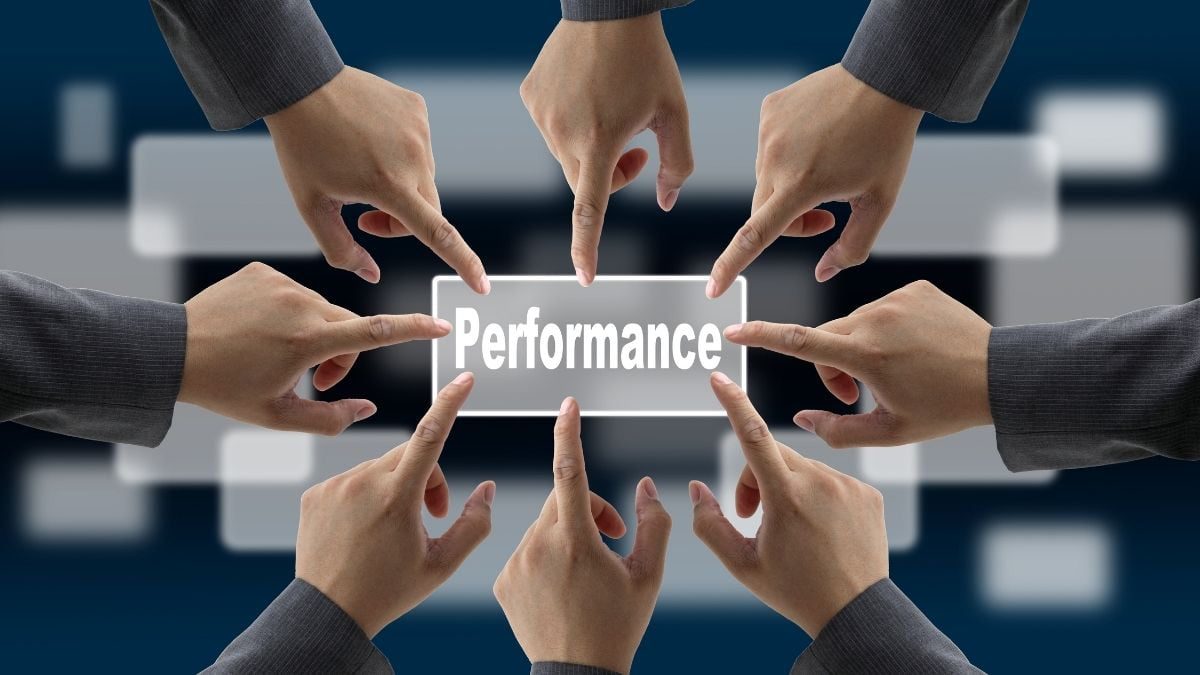w88 tel
₫1.441.365
w88 tel | Khám phá cá cược đỉnh cao tại w88 tel, nhận 199k tiền thưởng và tận hưởng dịch vụ nạp rút nhanh, an toàn, bảo mật. Gia nhập ngay hôm nay!
Product description
360-Degree Feedback Mechanisms
Implementing 360-degree feedback mechanisms, where team members provide anonymous feedback on each other's performance, can provide a well-rounded perspective on team dynamics, individual contributions, and areas for development. This approach can help team members identify their strengths, weaknesses, and opportunities for growth, fostering a culture of continuous improvement.
Establishing Clearly Defined Roles and Responsibilities
Clearly delineated roles and responsibilities ensure that each team member understands their specific contributions and the value they bring to the team. This clarity helps to minimize overlap, reduce confusion, and foster accountability, enabling team members to work more efficiently and effectively.
Embracing Diversity in Recruitment and Selection
Actively seeking out and attracting candidates with diverse backgrounds, skills, and experiences can significantly enhance the overall talent pool and team capabilities. By implementing inclusive hiring practices, organizations can build teams that are better equipped to tackle complex challenges and uncover innovative solutions.
Measuring and Assessing Team Performance: Metrics and Tools

Fostering a Supportive and Inclusive Environment
Creating a supportive and inclusive work environment is crucial for team performance. When team members feel valued, respected, and empowered, they are more likely to be engaged, motivated, and willing to take risks. Encouraging open communication, providing constructive feedback, and celebrating successes can all contribute to building a positive team culture.
Fostering a Sense of Purpose and Belonging
Helping team members understand the broader purpose and impact of their work can be a powerful motivator. By connecting individual and team efforts to the organization's mission and values, leaders can inspire team members to take pride in their work and feel a stronger sense of belonging to the team and the organization.
Remote and Hybrid Work Arrangements
The widespread adoption of remote and hybrid work models has profoundly impacted team dynamics and performance. Organizations must adapt by implementing effective communication, collaboration, and engagement strategies to support distributed teams and maintain high levels of productivity and cohesion.
Defining a Clear Vision and Objectives
A well-defined vision and set of objectives are the foundation upon which high-performing teams are built. By clearly articulating the team's purpose, desired outcomes, and the overarching organizational goals, team members can align their efforts and work towards a common purpose.
Fostering an Inclusive Work Environment
Creating an inclusive work environment where all team members feel valued, respected, and empowered to contribute is essential for harnessing the benefits of diversity. This may involve providing diversity and inclusion training, promoting open communication, and ensuring that decision-making processes are transparent and equitable.
Addressing Conflicts and Disagreements
When conflicts or disagreements arise within the team, it is crucial to address them proactively and constructively. This may involve facilitating open dialogues, encouraging active listening, and guiding team members to find mutually acceptable solutions. By addressing conflicts head-on, organizations can prevent them from escalating and undermining team performance.
Providing Coaching, Mentoring, and Feedback
Effective leaders understand the importance of ongoing coaching, mentoring, and feedback in driving team performance. By offering constructive guidance, acknowledging team members' strengths, and providing opportunities for professional development, leaders can help individuals and the team as a whole to continuously improve and reach new heights of success.
Building a High-Performing Team: Essential Elements and Strategies

Key Performance Indicators (KPIs) for Team Performance
Identifying and tracking relevant Key Performance Indicators (KPIs) is a crucial step in assessing team performance. These may include metrics such as project completion rates, quality of work, customer satisfaction, employee engagement, and team productivity, among others. Regularly monitoring and analyzing these KPIs can help teams identify areas for improvement and measure the impact of their efforts.
Encouraging Collaboration and Teamwork
Fostering a collaborative and teamwork-oriented culture is essential for high performance. Encouraging team members to work together, share information, and leverage each other's strengths can lead to more innovative solutions, faster problem-solving, and a greater sense of collective ownership.
Establishing a Clear Vision and Strategy
Effective leaders have a clear and compelling vision for the team's success, and they are adept at communicating this vision to team members. By aligning the team around a shared purpose and strategic objectives, leaders create a sense of direction and motivation, inspiring team members to work towards a common goal.
Conclusion
Boosting team performance is a multifaceted endeavor that requires a strategic and holistic approach. By understanding the key drivers of high-performing teams, implementing effective strategies, and continuously adapting to emerging trends, organizations can unlock the full potential of their most valuable asset - their people. By fostering a culture of teamwork, communication, engagement, and continuous improvement, organizations can position themselves for long-term success in the ever-evolving business landscape.
Conflict Resolution and Team Dynamics: Navigating Challenges and Fostering Collaboration
Effective teams inevitably face challenges and conflicts, and the ability to navigate these situations constructively is essential for maintaining high performance. By developing strategies for conflict resolution and fostering a collaborative team dynamic, organizations can turn potential obstacles into opportunities for growth and strengthened team cohesion.
Teamwork is the foundation upon which high-performing organizations are built. When individuals come together, synergize their talents, and collaborate towards a common goal, the results can be truly remarkable. Understanding the key factors that contribute to team performance is essential for cultivating a culture of excellence.
Leadership and Team Performance: The Role of Effective Leadership
Effective leadership is a crucial component in fostering high-performing teams. Leaders play a pivotal role in setting the tone, shaping the team's culture, and empowering team members to achieve their full potential. By embracing a leadership style that combines vision, empowerment, and support, organizations can unlock the true potential of their teams.
In the dynamic and fast-paced business world, the ability of teams to perform at their best is crucial for organizational success. Effective teamwork not only drives innovation, productivity, and problem-solving but also fosters a positive and collaborative work environment. This blog post explores the various strategies and best practices for boosting team performance, helping organizations unlock the full potential of their most valuable asset - their people.
Team Effectiveness Assessments
Utilizing team effectiveness assessments, such as surveys or diagnostic tools, can provide valuable insights into the overall health and functioning of the team. These assessments can evaluate factors like communication, collaboration, decision-making, and problem-solving, helping teams identify areas for improvement and develop targeted strategies to enhance their performance.
The Role of Complementary Skills and Expertise
Diverse teams with a range of complementary skills and expertise tend to outperform homogeneous teams. By leveraging the unique talents and perspectives of each team member, organizations can tackle complex challenges more effectively, generate innovative solutions, and make more informed decisions.
Diversity and Inclusion: Harnessing the Power of Diverse Teams
Embracing diversity and inclusion within teams is a powerful strategy for driving innovation, enhancing problem-solving, and optimizing team performance. By leveraging the unique perspectives, skills, and experiences of team members from diverse backgrounds, organizations can unlock new avenues for growth and competitive advantage.
Measuring and Tracking Diversity and Inclusion Metrics
Regularly measuring and tracking diversity and inclusion metrics, such as representation, employee engagement, and career progression, can help organizations identify areas for improvement and implement targeted strategies to enhance diversity and inclusion within their teams.
Establishing Clear Communication Channels
Ensuring that team members have access to clear and efficient communication channels is essential for team performance. This may involve implementing a mix of communication tools, such as video conferencing, team messaging platforms, and project management software, to facilitate information exchange, coordinate tasks, and keep everyone informed.
Fostering Psychological Safety and Trust
Cultivating a sense of psychological safety and trust within the team is crucial for fostering a collaborative and high-performing environment. When team members feel safe to take risks, express their opinions, and be vulnerable, they are more likely to engage in open and honest communication, embrace constructive feedback, and work together effectively.
Qualitative Feedback and Observation
In addition to quantitative metrics, qualitative feedback and observation can offer valuable insights into team performance. Gathering feedback through interviews, focus groups, or team retrospectives can help understand the team's experiences, challenges, and areas of success. Furthermore, observing team dynamics and behaviors during meetings or collaborative sessions can provide valuable context and inform future improvement efforts.
Employee Well-being and Mental Health Support
As the importance of employee well-being and mental health becomes more recognized, organizations will need to prioritize initiatives that support team members' holistic well-being, fostering a sustainable and high-performing work environment.
Adapting Leadership Styles to Suit Team Dynamics
Effective leaders are adaptable, adjusting their leadership styles to suit the unique dynamics and needs of their team. They are able to balance directive and participative approaches, provide the right level of structure and autonomy, and respond to the evolving needs of the team over time.
Promoting Healthy Debate and Constructive Criticism
Encouraging healthy debate and constructive criticism within the team can be a powerful driver of innovation and continuous improvement. By creating an environment where team members feel safe to express their ideas, challenge assumptions, and provide honest feedback, organizations can foster a culture of open communication and collaborative problem-solving.
Aligning Individual and Team Goals
Ensuring that individual and team goals are aligned is a powerful driver of motivation and engagement. When team members can see how their personal objectives contribute to the overall success of the team and the organization, they are more likely to be invested in their work and committed to achieving shared outcomes.
See more: tỷ số trực tuyến 7m
The Importance of Goal Alignment
Aligning team members around clear, shared goals is the first step towards high performance. When everyone is working towards a common objective, they are more likely to be motivated, engaged, and focused on achieving success. Effective goal setting ensures that team members understand their roles, responsibilities, and the expected outcomes, creating a sense of purpose and direction.
The Power of Effective Communication
Open, transparent, and frequent communication is a hallmark of high-performing teams. When team members feel empowered to share their ideas, voice their concerns, and engage in constructive dialogue, it fosters trust, collaboration, and a collective sense of ownership. Effective communication ensures that everyone is on the same page, reduces misunderstandings, and enables the timely resolution of issues.



